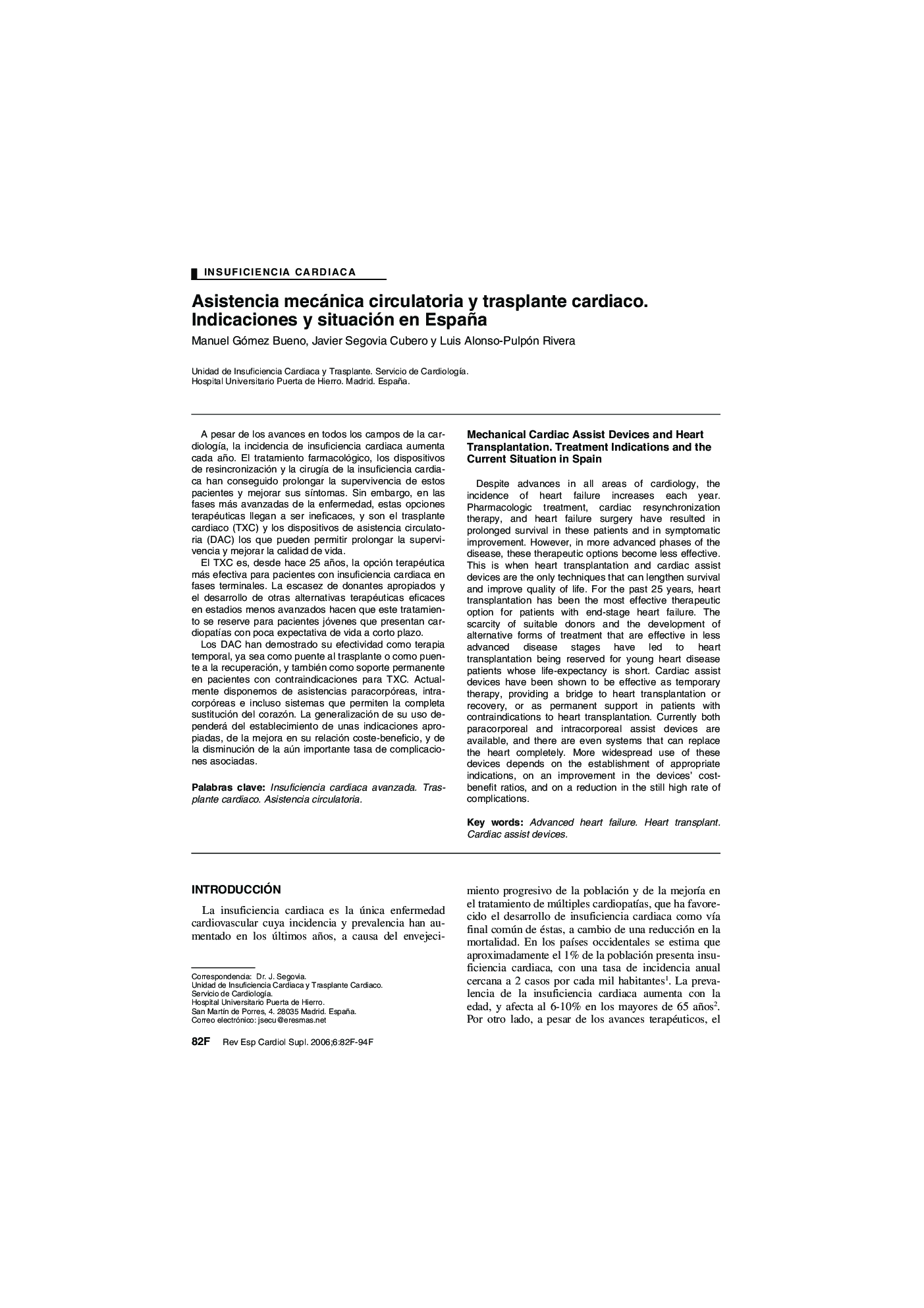| Article ID | Journal | Published Year | Pages | File Type |
|---|---|---|---|---|
| 3019807 | Revista Española de Cardiología Suplementos | 2006 | 13 Pages |
Abstract
Despite advances in all areas of cardiology, the incidence of heart failure increases each year. Pharmacologic treatment, cardiac resynchronization therapy, and heart failure surgery have resulted in prolonged survival in these patients and in symptomatic improvement. However, in more advanced phases of the disease, these therapeutic options become less effective. This is when heart transplantation and cardiac assist devices are the only techniques that can lengthen survival and improve quality of life. For the past 25 years, heart transplantation has been the most effective therapeutic option for patients with end-stage heart failure. The scarcity of suitable donors and the development of alternative forms of treatment that are effective in less advanced disease stages have led to heart transplantation being reserved for young heart disease patients whose life-expectancy is short. Cardiac assist devices have been shown to be effective as temporary therapy, providing a bridge to heart transplantation or recovery, or as permanent support in patients with contraindications to heart transplantation. Currently both paracorporeal and intracorporeal assist devices are available, and there are even systems that can replace the heart completely. More widespread use of these devices depends on the establishment of appropriate indications, on an improvement in the devices' costbenefit ratios, and on a reduction in the still high rate of complications.
Keywords
Related Topics
Health Sciences
Medicine and Dentistry
Cardiology and Cardiovascular Medicine
Authors
Manuel Gómez Bueno, Javier Segovia Cubero, Luis Alonso-Pulpón Rivera,
